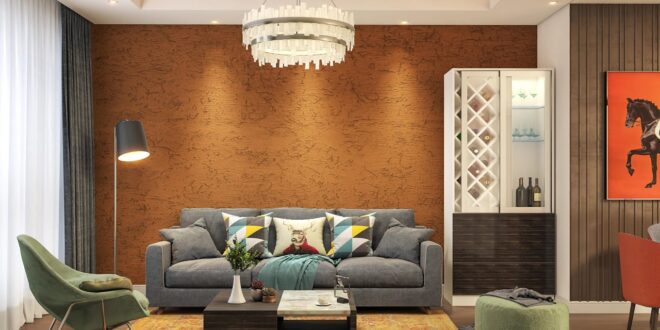Transform Your Living Room: Unleashing the Power of Paint
The living room, often the heart of the home, deserves a paint job that reflects your personality, style, and the overall ambiance you wish to create. More than just slapping on a coat of color, the right painting design can completely revolutionize the space, making it feel larger, cozier, more sophisticated, or more inviting. Choosing the perfect painting design for your living room is an exciting journey, a chance to infuse your personal touch into a space where memories are made. This guide will explore a range of painting designs, color palettes, and techniques, offering inspiration and practical advice to help you transform your living room into a stunning sanctuary.
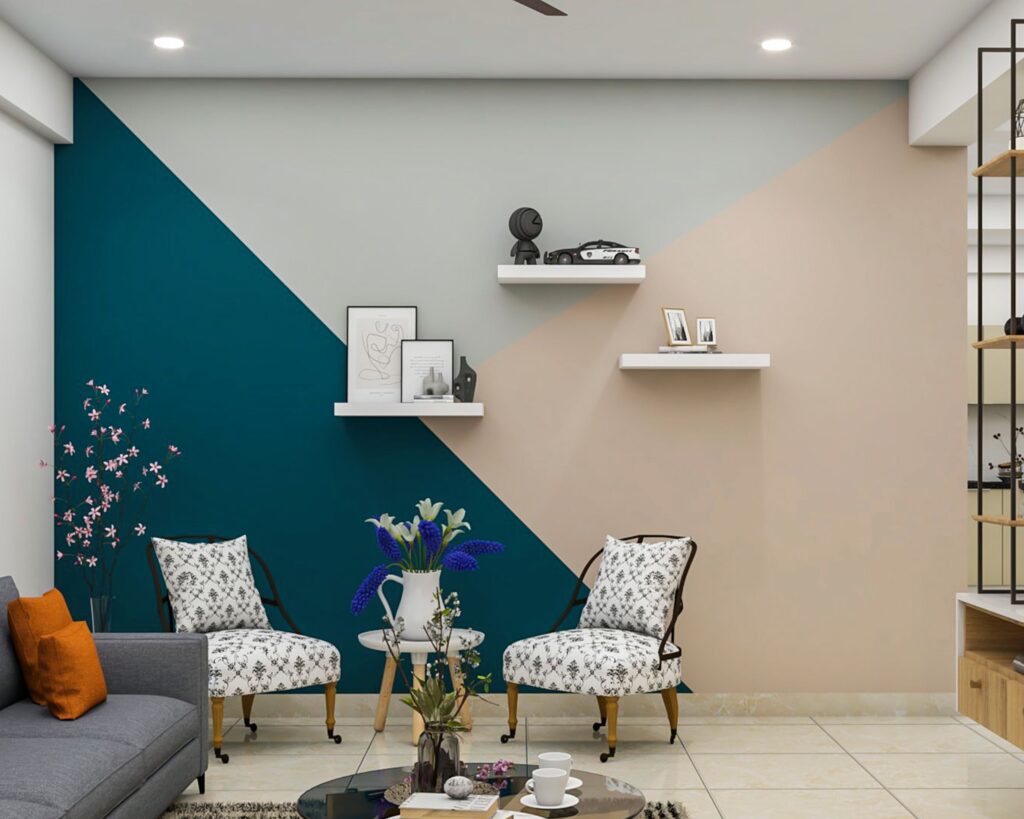
Understanding the Psychology of Color in Your Living Room
Before diving into specific painting designs, it’s crucial to understand the psychology of color. Colors evoke emotions and influence our moods, so selecting the right hues is paramount.
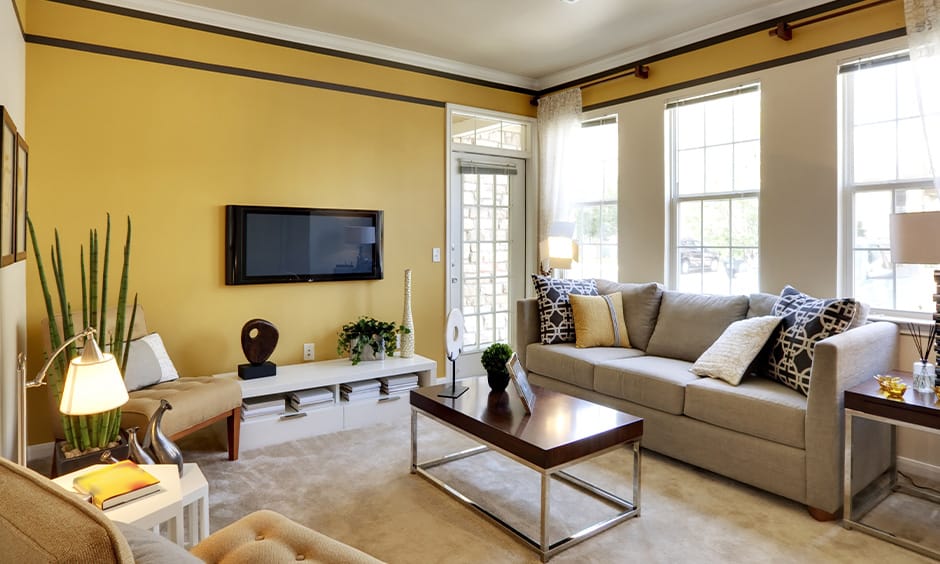
- Blues and Greens: Known for their calming and serene effects, blues and greens are ideal for creating a relaxing and tranquil living room. They promote feelings of peace, stability, and harmony. Think coastal blues, soft greens, and even deeper teal shades.
- Yellows and Oranges: These colors radiate warmth, energy, and optimism. They can brighten up a space and create a cheerful and inviting atmosphere. However, use them judiciously, as excessive use can be overwhelming. Mustard yellows, terracotta oranges, and even muted peach tones can work beautifully.
- Reds and Pinks: Reds are associated with passion, energy, and excitement. Pinks, on the other hand, evoke feelings of love, romance, and tranquility. Both colors can be used strategically to add a pop of color and visual interest. A deep burgundy accent wall or soft blush pink accents can make a statement.
- Neutrals (Grays, Whites, Beiges): Neutrals provide a versatile backdrop that complements a variety of styles and palettes. They are timeless, elegant, and can create a sense of spaciousness. The key is to choose the right undertones. Warm grays, creamy whites, and sophisticated beiges offer endless possibilities.
Exploring Different Painting Designs for Your Living Room
Beyond color, the painting design itself plays a significant role in transforming your living room. Here are some popular and innovative painting design ideas to consider:
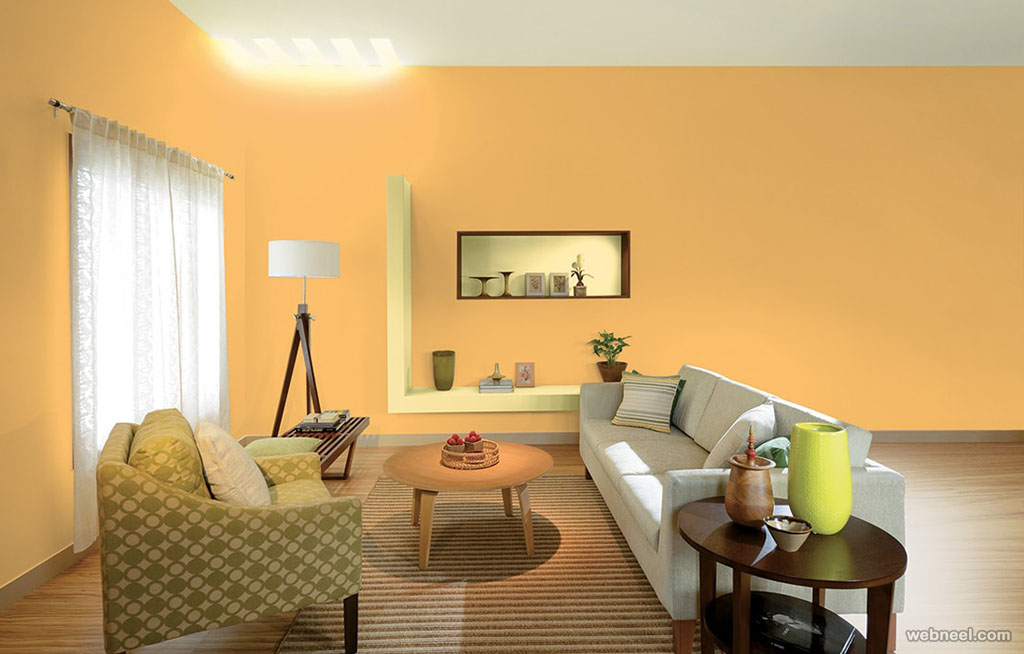
1. The Classic One-Color Scheme
This is the simplest and most timeless approach. Choose a single color for all the walls, creating a unified and cohesive look. However, avoid monotony by playing with different sheens. A matte finish on the walls combined with a semi-gloss finish on the trim adds subtle visual interest. Consider using different shades of the same color, painting the ceiling a lighter shade to make the room feel taller.
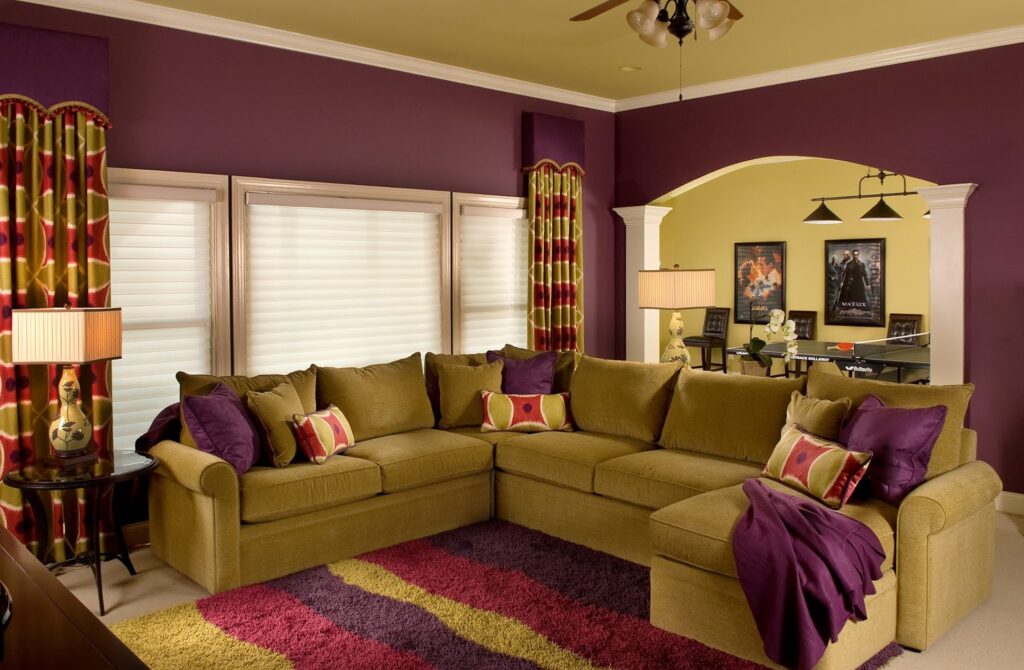
2. Accent Walls: A Pop of Personality
Accent walls are a fantastic way to inject personality and visual drama into your living room. Choose one wall – typically the focal point of the room, such as the wall behind the sofa or fireplace – and paint it in a contrasting color or a bold pattern. This draws the eye and creates a focal point. Consider using darker shades for accent walls to add depth and dimension.
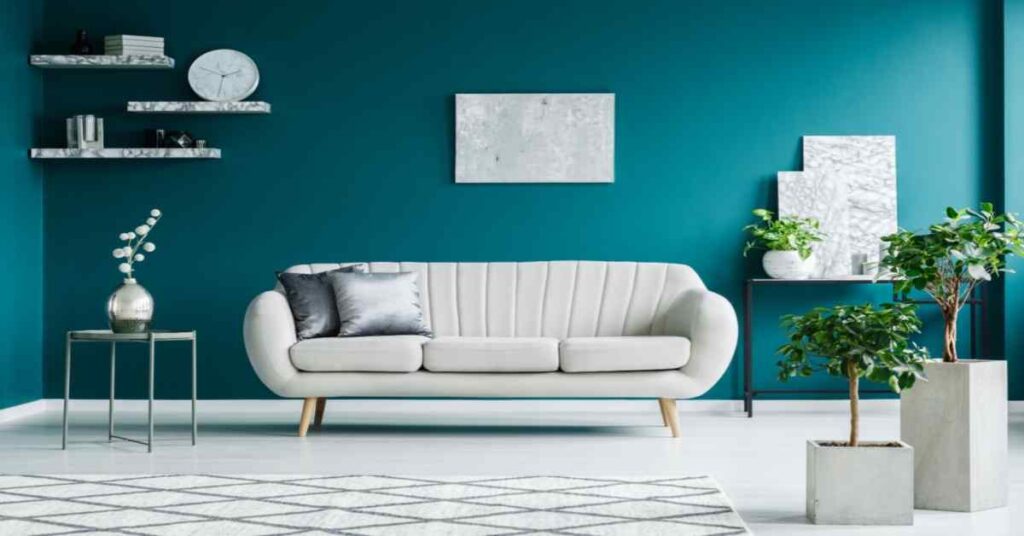
3. Two-Tone Painting: Adding Depth and Interest
Two-tone painting involves dividing the walls horizontally and painting the top and bottom sections in different colors. This technique can create a sense of height or width, depending on the color placement. Painting the lower section a darker color can ground the room, while a lighter color on the top section can make it feel more spacious. A chair rail or decorative molding can be used to define the transition between the two colors.
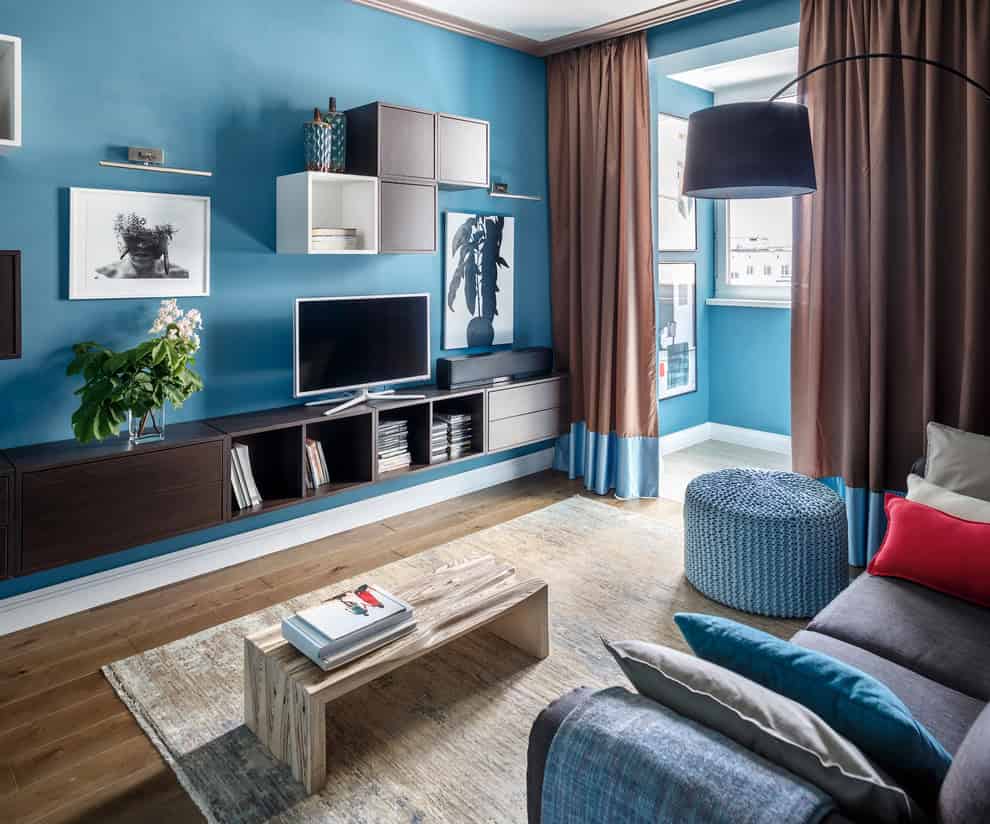
4. Ombre Walls: A Gradual Transition of Color
Ombre walls feature a gradual transition of color from light to dark or vice versa. This creates a soft, dreamy effect that adds a touch of elegance and sophistication to the living room. Achieving an ombre effect requires blending different shades of the same color seamlessly. This design works well with blues, purples, and grays, creating a calming and serene atmosphere.
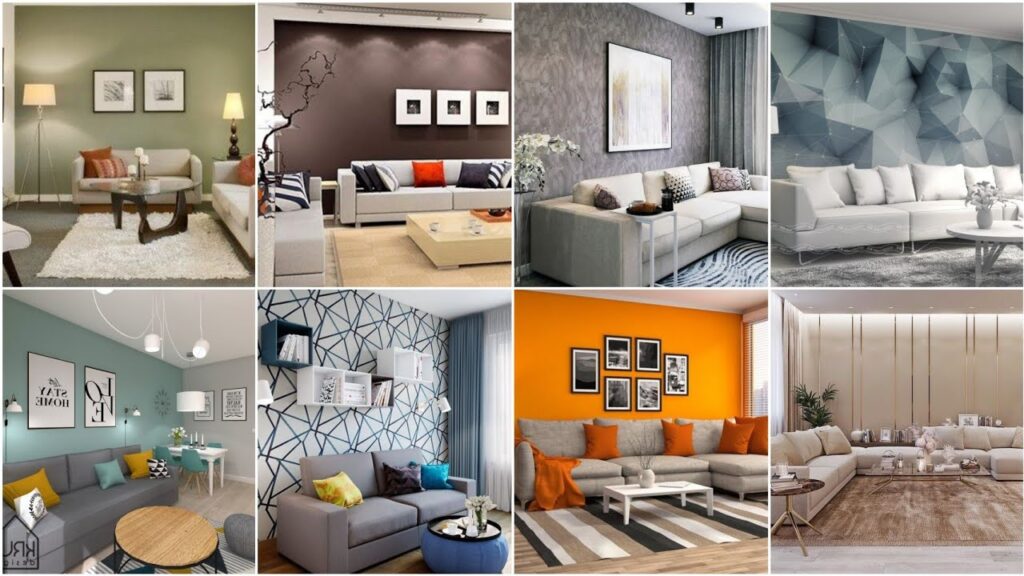
5. Geometric Patterns: Adding a Modern Edge
Geometric patterns, such as stripes, triangles, and chevrons, can add a modern and edgy touch to your living room. These patterns can be created using paint, stencils, or tape. Choose colors that complement the overall décor of the room. Bold geometric patterns can create a focal point, while subtle patterns can add visual interest without being overwhelming.
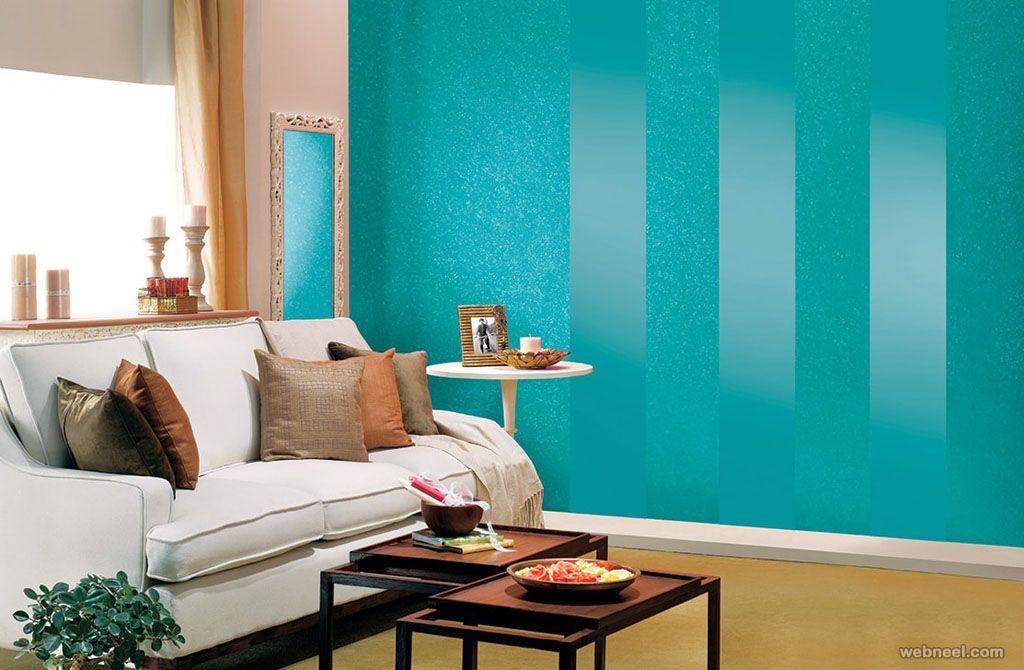
6. Stenciled Designs: Adding Intricate Details
Stenciled designs are a great way to add intricate details and patterns to your living room walls. Choose stencils that reflect your personal style, whether it’s floral motifs, geometric shapes, or abstract designs. Stenciling can be done with paint, metallic leaf, or even textured mediums. This technique allows you to customize your walls and create a truly unique space.
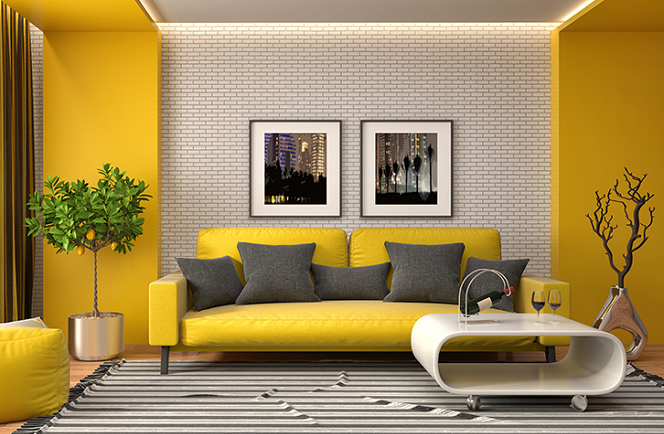
7. Faux Finishes: Creating Texture and Depth
Faux finishes are painting techniques that mimic the look of natural materials, such as marble, wood, or stone. These finishes add texture and depth to the walls, creating a sophisticated and luxurious look. Popular faux finishes include sponging, rag rolling, and color washing. Faux finishes require a certain level of skill and expertise, so consider hiring a professional painter if you’re not comfortable tackling the project yourself.
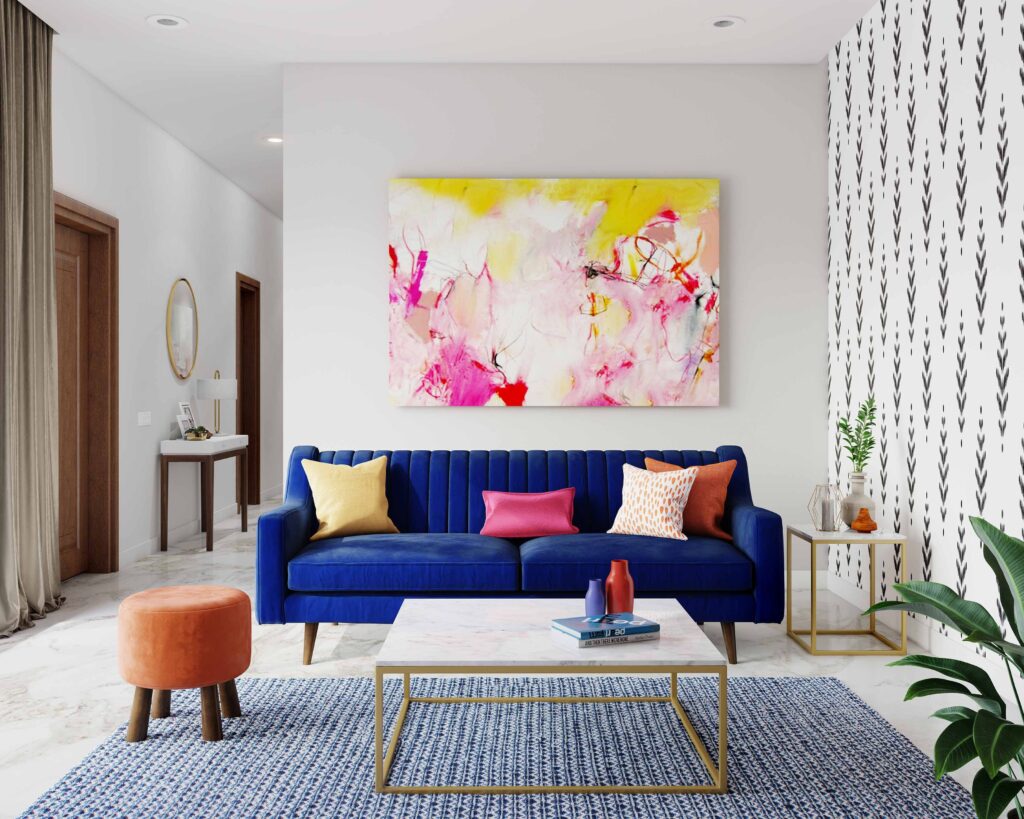
8. Mural Magic: A Statement of Art
Consider a mural if you’re looking to make a bold statement. Murals can depict anything from scenic landscapes to abstract art, transforming your living room into a personal gallery. You can either paint a mural yourself or hire a professional muralist. Murals can be used to create a focal point, add visual interest, and reflect your personal style and interests.
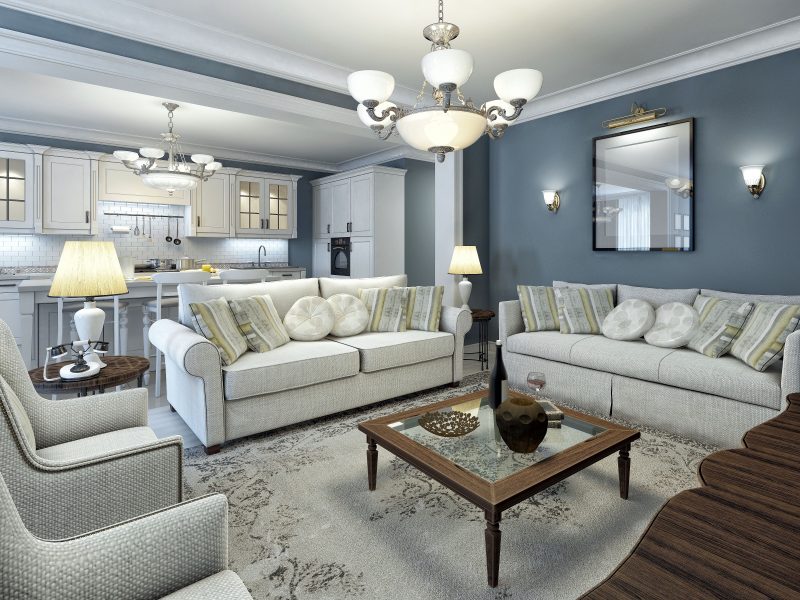
Choosing the Right Paint Finish: Matte, Satin, or Gloss?
The paint finish you choose can significantly impact the overall look and feel of your living room. Each finish has its own unique characteristics and is suited for different purposes. Here’s a breakdown of the most common paint finishes:

- Matte Finish: Matte finish has a low sheen and is ideal for hiding imperfections on the walls. It creates a soft, velvety look that is perfect for living rooms and bedrooms. Matte finish is not as durable as other finishes and can be difficult to clean, so it’s best suited for low-traffic areas.
- Eggshell Finish: Eggshell finish has a slightly higher sheen than matte and is more durable and easier to clean. It’s a good choice for living rooms and hallways that see moderate traffic. Eggshell finish provides a subtle sheen that adds a touch of elegance without being too glossy.
- Satin Finish: Satin finish has a higher sheen than eggshell and is even more durable and easier to clean. It’s a good choice for living rooms, kitchens, and bathrooms that see heavy traffic. Satin finish provides a smooth, velvety look that is resistant to stains and moisture.
- Semi-Gloss Finish: Semi-gloss finish has a high sheen and is very durable and easy to clean. It’s a good choice for trim, doors, and cabinets that are frequently touched and cleaned. Semi-gloss finish provides a shiny, reflective surface that is resistant to scratches and moisture.
- Gloss Finish: Gloss finish has the highest sheen and is the most durable and easiest to clean. It’s typically used for trim, doors, and furniture that need to withstand heavy wear and tear. Gloss finish provides a highly reflective surface that is resistant to stains, moisture, and scratches.
Tips for Choosing the Perfect Painting Design
Choosing the perfect painting design for your living room can feel overwhelming, but with a little planning and consideration, you can create a space that you love. Here are some tips to help you make the right choices:
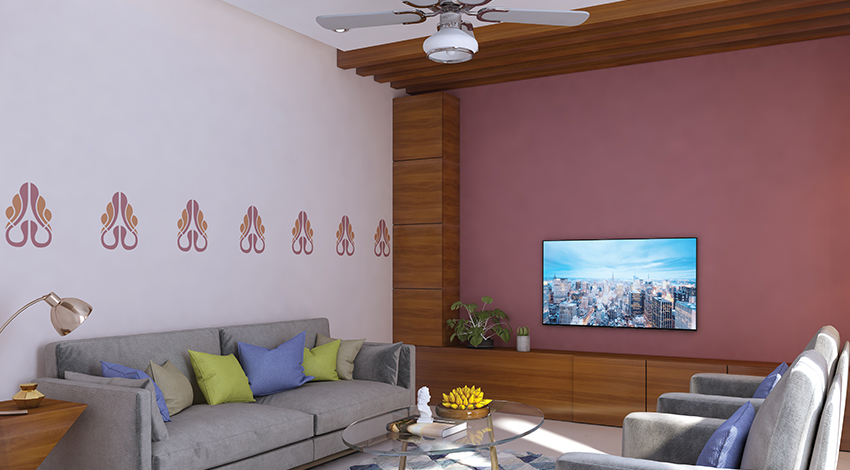
- Consider the Size and Shape of the Room: Lighter colors can make a small room feel larger and more spacious, while darker colors can make a large room feel cozier and more intimate. Vertical stripes can make a room feel taller, while horizontal stripes can make it feel wider.
- Consider the Natural Light: Rooms with plenty of natural light can handle darker colors, while rooms with limited natural light will benefit from lighter colors. Consider how the light changes throughout the day and how it will affect the appearance of the colors.
- Consider Your Existing Décor: Choose colors that complement your existing furniture, flooring, and accessories. Consider the style of your décor and choose colors that reflect that style.
- Test Paint Colors Before You Commit: Paint samples on a large piece of cardboard and observe them in different lighting conditions throughout the day. This will help you see how the colors will actually look in your living room.
- Don’t Be Afraid to Experiment: Painting is a relatively inexpensive way to transform your living room, so don’t be afraid to try new things and experiment with different colors and designs.
- Hire a Professional Painter: If you’re not comfortable tackling the painting project yourself, consider hiring a professional painter. A professional painter can ensure that the job is done correctly and efficiently, and they can also offer advice and guidance on choosing the right colors and designs.
Preparing Your Living Room for Painting
Proper preparation is key to achieving a professional-looking paint job. Before you start painting, take the time to prepare your living room properly. Here are some essential steps to follow:

- Remove Furniture and Accessories: Remove all furniture and accessories from the room or cover them with drop cloths. This will protect them from paint splatters and spills.
- Protect the Flooring: Cover the flooring with drop cloths or plastic sheeting. This will protect it from paint splatters and spills.
- Clean the Walls: Clean the walls with soap and water to remove any dirt, dust, or grease. This will help the paint adhere properly.
- Repair Any Damage: Repair any cracks, holes, or imperfections in the walls with spackle or joint compound. Allow the repair to dry completely before sanding it smooth.
- Sand the Walls: Sand the walls with fine-grit sandpaper to create a smooth surface for the paint. This will help the paint adhere properly and prevent it from peeling or chipping.
- Prime the Walls: Apply a coat of primer to the walls. Primer helps the paint adhere properly, seals the surface, and prevents the color from bleeding through.
- Tape Off the Trim: Tape off the trim, windows, and doors with painter’s tape. This will protect them from paint splatters and spills and create clean, crisp lines.
Painting Techniques for a Professional Finish
Using the right painting techniques is essential for achieving a professional-looking finish. Here are some tips to follow:
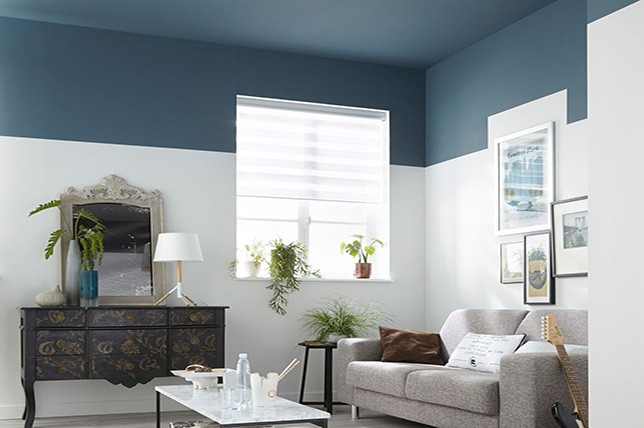
- Use High-Quality Paint and Tools: Invest in high-quality paint, brushes, rollers, and other painting tools. This will ensure that the paint goes on smoothly and evenly and that the finish is durable and long-lasting.
- Apply Thin, Even Coats: Apply thin, even coats of paint rather than thick, heavy coats. This will prevent drips and runs and ensure that the paint dries properly.
- Overlap Each Stroke: Overlap each stroke slightly to ensure that the entire surface is covered evenly.
- Maintain a Wet Edge: Maintain a wet edge to prevent lap marks. Lap marks are visible lines that occur when wet paint is applied over dry paint.
- Clean Your Brushes and Rollers: Clean your brushes and rollers thoroughly after each use. This will prevent them from drying out and becoming stiff.
- Allow the Paint to Dry Completely: Allow the paint to dry completely before applying a second coat or removing the painter’s tape. This will prevent the paint from peeling or chipping.
Beyond Paint: Complementary Decor Elements
The right painting design is only one piece of the puzzle. To truly elevate your living room, consider complementary decor elements that enhance the overall aesthetic.
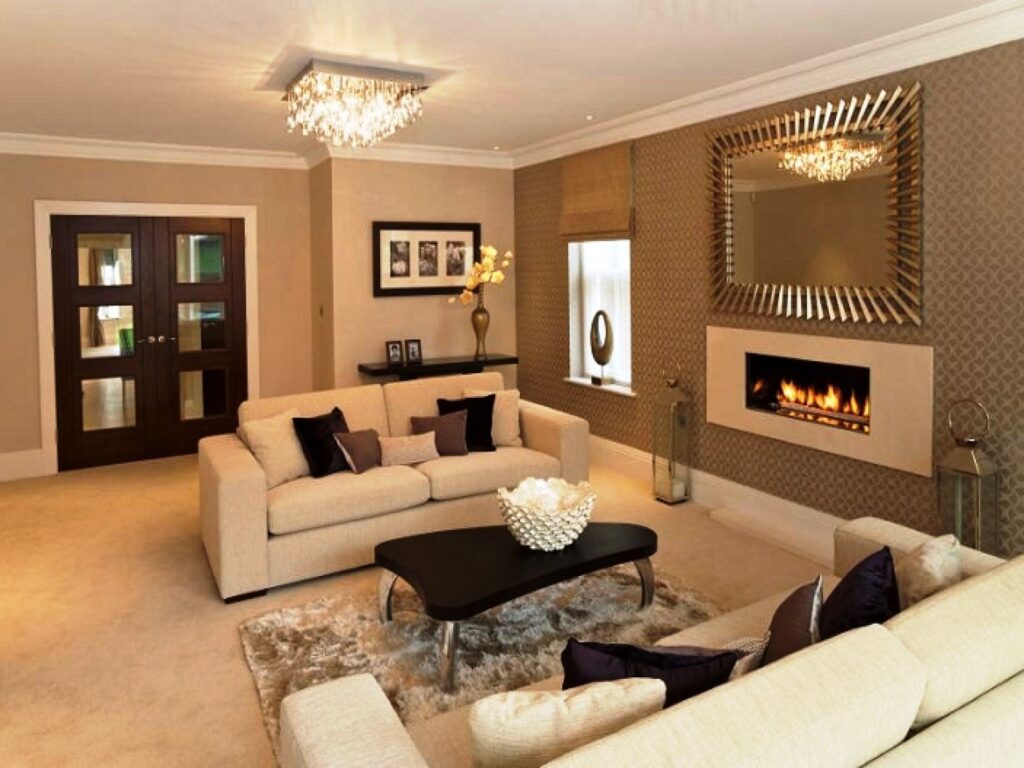
- Lighting: Strategic lighting can dramatically impact how your paint colors appear. Layer ambient, task, and accent lighting to create depth and highlight specific features.
- Textiles: Rugs, curtains, and throw pillows add texture and warmth. Choose colors and patterns that harmonize with your walls.
- Artwork: Select artwork that complements your chosen color palette and reflects your personal taste.
- Accessories: Decorative objects, plants, and books add personality and create a lived-in feel.
In Conclusion: Your Living Room, Your Canvas
Choosing a painting design for your living room is an opportunity to express your creativity and transform your space into a reflection of your personality. By understanding the psychology of color, exploring different painting designs, and following the tips outlined in this guide, you can create a living room that is both beautiful and functional. Remember to consider the size and shape of the room, the natural light, and your existing décor. Don’t be afraid to experiment and try new things. With a little planning and effort, you can create a living room that you love.
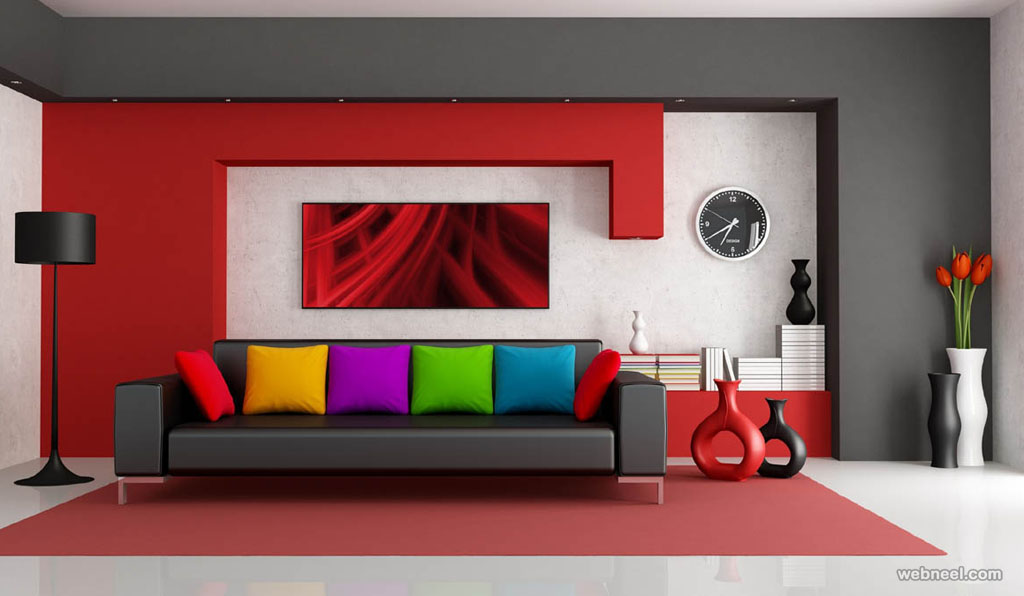
 Nimila
Nimila
